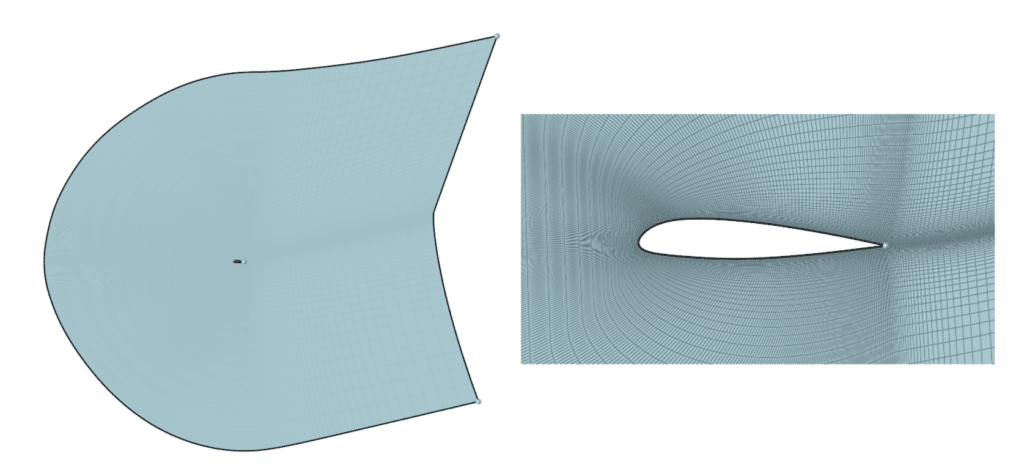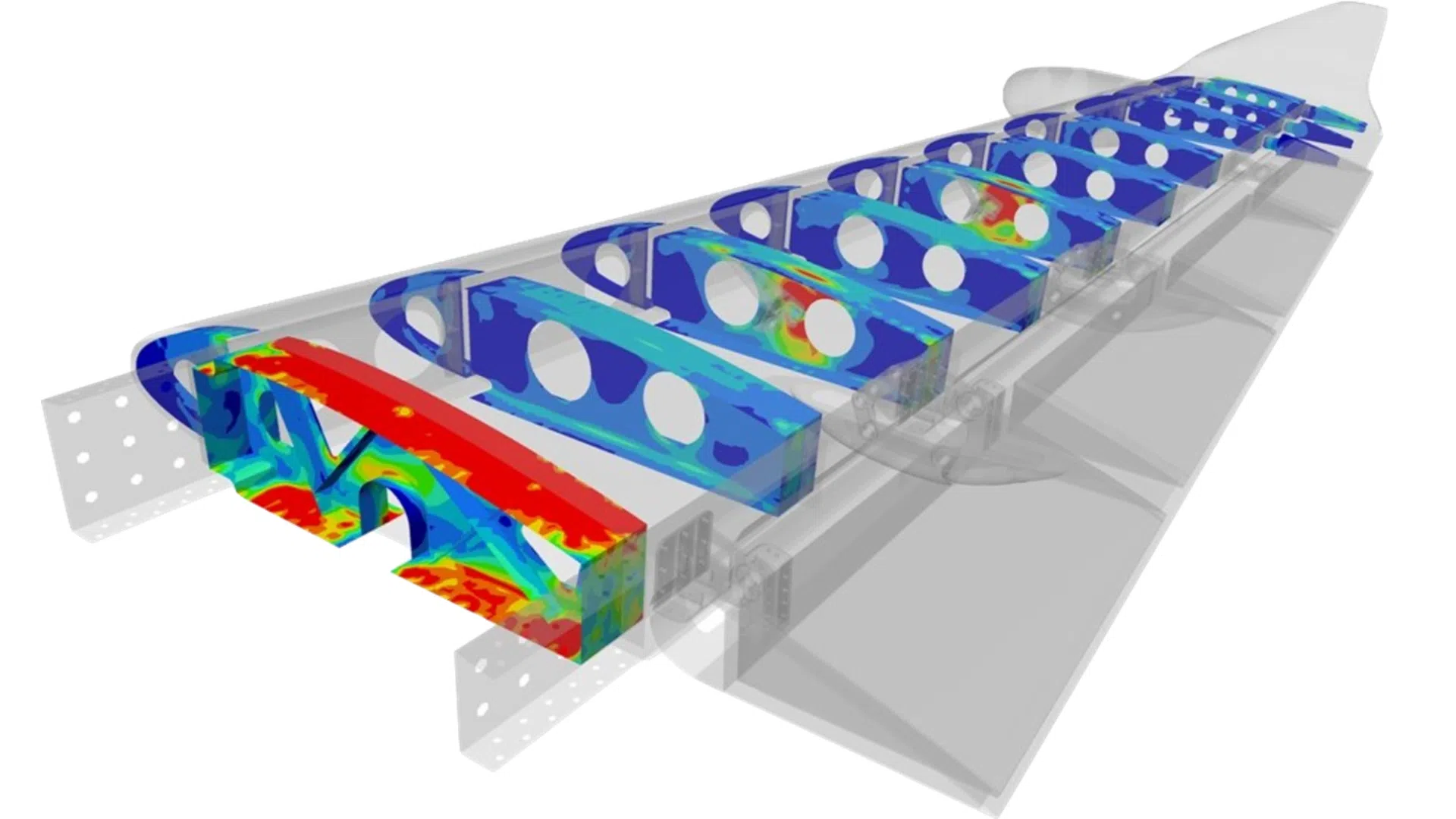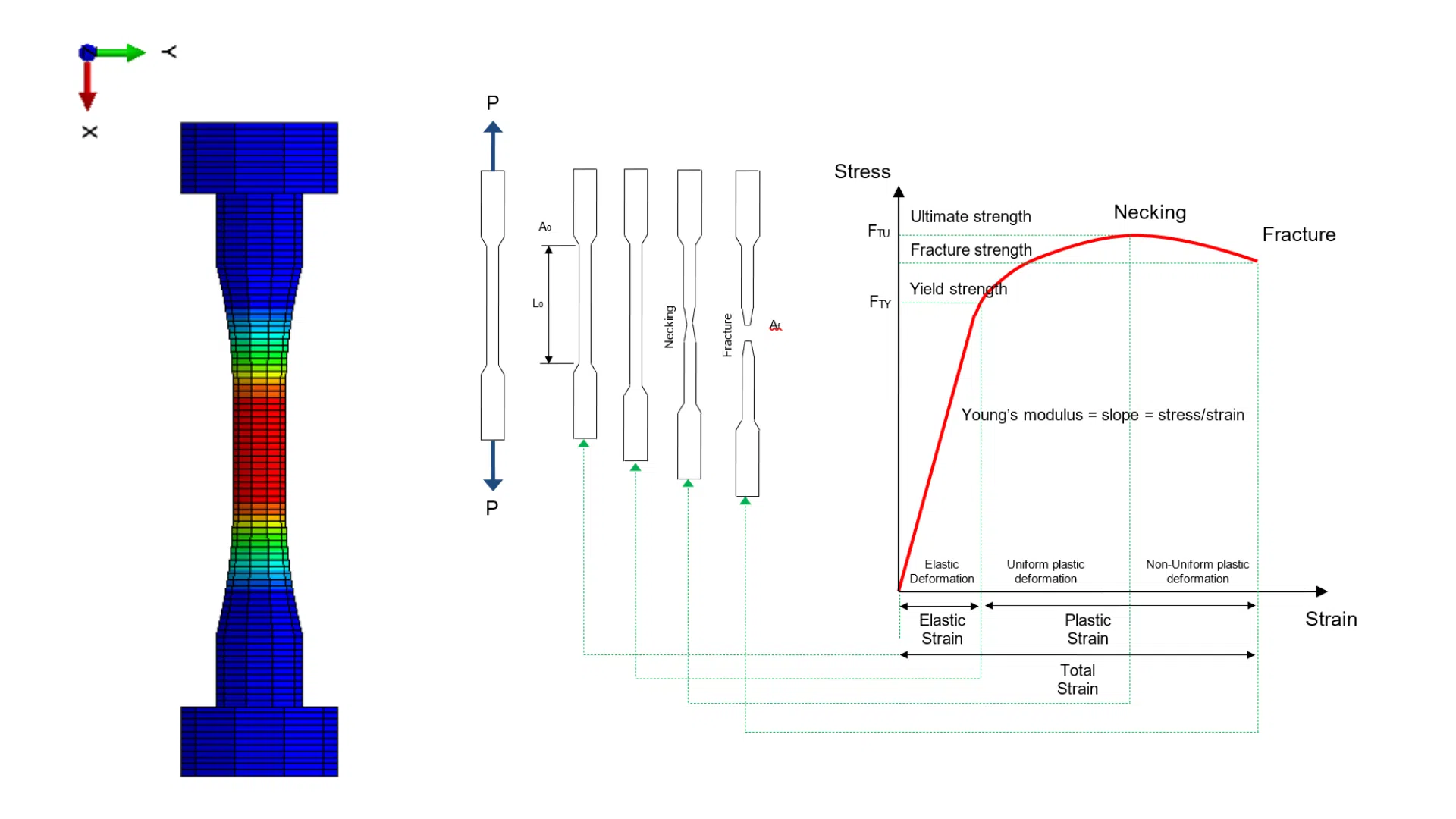In this post on Computational Fluid Dynamics (CFD) we will deal with an example of external aerodynamics where it is essential to capture the regime transition effects well. This case requires a special turbulence modelling since in most CFD simulations it is possible to work considering that the flow is at all times only laminar or turbulent.
The model will consist of a nearly two-dimensional domain with the usual symmetry conditions. We will use Hypermesh and Hyperworks CFD to prepare the model and perform the calculation with Acusolve. The geometry of the domain and its meshing can be seen in the image below.

CFD model preparation
The boundary conditions of the model are those shown in the image, similar to those of the previous case study of an airfoil but adapted to the different operating conditions that we want to simulate.

In the physics tab, select “Mildly Compressible” flow analysis and SST turbulence model. We will test three simulations, one with the model without transition effects, one with the Gamma transition model and one with the Gamma-Re-Theta.
These models introduce an additional variable called intermittency that shows an average of the fraction of the time when the flow has turbulent behaviour. In areas with zero intermittency the flow is totally laminar and where the intermittency is 1 the flow is turbulent.
A more detailed explanation of this variable, along with detailed steps to simulate the case, can be found in the tutorial available in the Downloads section.
CFD Simulation and Results
The following pictures show the pressure results for the three simulated cases. At the top the fully turbulent SST model without transition effects, in the middle with Gamma transition model and below with Gamma-Re-Theta.

Drawing the velocity and Mach number profiles shows that the flow is far from supersonic. Therefore, the subsonic compressible flow hypothesis is valid.
These results show slight variations between the transition models, but significant in relation to the fully turbulent case, especially in the upper part of the profile. Drawing the intermittency in the Gamma model case, it is found that in the whole wake the transition effects are fundamental.

Analysis of results. Typical coefficients in aerodynamics.
Comparing the pressure coefficients obtained in the three simulated cases, the transition models give very similar results. The turbulent SST model differs from the others especially in the detachment zone.

From this study it is concluded that transition models are an important tool to be taken into account in simulations where there are very different turbulence scales, such as in this case the free flow and the wake of the profile.


